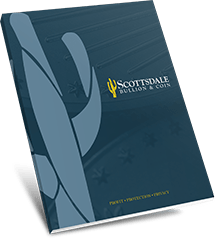
As mentioned in my prior weekly emails, gold and silver appear to have put in short term bottoms. Physical demand for both metals continues to surge, as supplies and inventories continue to wane.
Yes, the paper gold and silver prices via the NY Commodity Exchange, continue to drift sideways to lower, which in turn causes the average Joe on the street to lose interest. But, by knowing the bullion banks have manipulated the prices lower, and by knowing that many of the biggest price surges occur after a sustained period of weak bullish sentiment, the precious metals are due for a surge. This especially holds true as the bullion banks have reduced their net paper short position to an extreme and the “speculators” have built up a net short position, also to an extreme. The biggest key is, will the bullion banks go into “paper selling mode” again after gold rallies a few hundred dollars? The consensus is a resounding NO!
Why?
- Because in the short run the Bank of International Settlements (BIS) has reduced their gold selling/leasing to almost zero.
- New BIS regulations make it much more costly for the bullion banks to manipulate the paper prices lower.
- Yet another contingent of JP Morgan bullion traders were just convicted of manipulating precious metal prices lower.
- And finally, throw in the longer-term big picture which includes massive inflation and a world in disarray.
This weekend, Alasdair Macleod of GoldMoney.com [1], put out a great piece on gold. I often refer to Macleod’s analysis because not only is he a brilliant economist, but also has a deep understanding of what makes the gold and silver markets tick. So, here are some of Macleod’s recent observations:

Everything you need to know to get started in Precious Metals
Learn how precious metals can strengthen your portfolio, protect your assets and leverage inflation.
Putin is determined to remove the American threat to his Western borders by squeezing the EU to that end. But he is also building political relationships based on control of global fossil-fuel supplies — a pathway opened for him by American and European obsessions over climate change. In partnership with China, the consolidation of his power over the Eurasian landmass has progressed rapidly in recent weeks.For the Western Alliance, financially and economically his timing is particularly awkward, coinciding with the end of a 40-year period of declining interest rates, rising consumer price inflation, and a deepening recession driven by contracting bank credit. It is the continuation of a financial war by other means, and it looks like Putin has an unbeatable hand. He is on course to push our fragile fiat currency based financial system over the edge.
And finally, as insurance against a widespread fiat currency catastrophe, both Russia and China have stockpiled physical bullion. Russia is known to have about 12,000 tonnes. It mines 330 tonnes annually, which it is now adding to its hoard. Having accumulated the bulk of its hoard before permitting the Chinese public to buy gold, China’s state probably has over 30,000 tonnes, of which only 1,776 tonnes are declared official reserves. Therefore, the Russian and Chinese states between them command over 40,000 tonnes, which compares with America’s reserves, officially listed as 8,133 tonnes. As nations, they are also the two largest gold miners by output.
There can be no doubt that both China and Russia have a better understanding than western central banks of the relationship between money, which legally and in actuality is gold, and credit. They can only have built their reserves and mining capacity in anticipation that their currencies will need, one day, protection from a fiat currency crisis. First it was China, which accumulated most of her stash during the 1980-2002 bear market at prices as low as $275, before letting her citizens buy gold. With Russia, the accumulation has been more recent, undoubtedly seen by Putin as an essential part of his geopolitical ambitions. Both countries have concealed their true gold position, presumably so as to not threaten the dollar’s hegemony directly and to allow them to secretly add to their hoards. In the event of a fiat currency crisis for the dollar, both the rouble and yuan have more monetary projection backing them than in any of the currencies of their adversaries. There can be little doubt that Putin will do whatever it takes to protect Russia, the rouble, and his geostrategic plans from any crisis which might envelop the West.
It’s human nature to look away when market prices and excitement levels are relatively low. During these times, one might question the validity of gold and silver as insurance or an investment. But then, all you must do is ask yourself why…
- Why has China and Russia accumulated such massive gold reserves?
- Why are other Central Banks worldwide following in line?
- Why are many of the biggest players on Wall St also loading up on physical gold?
One would have to be brain dead not to be concerned about this country’s massive debt and inflation, and the overall state of our inherently weak economy. And even the Fed cannot prevent the bigger financial storm coming our way.
The final big question is: Have you done everything possible to prepare and protect yourselves?


